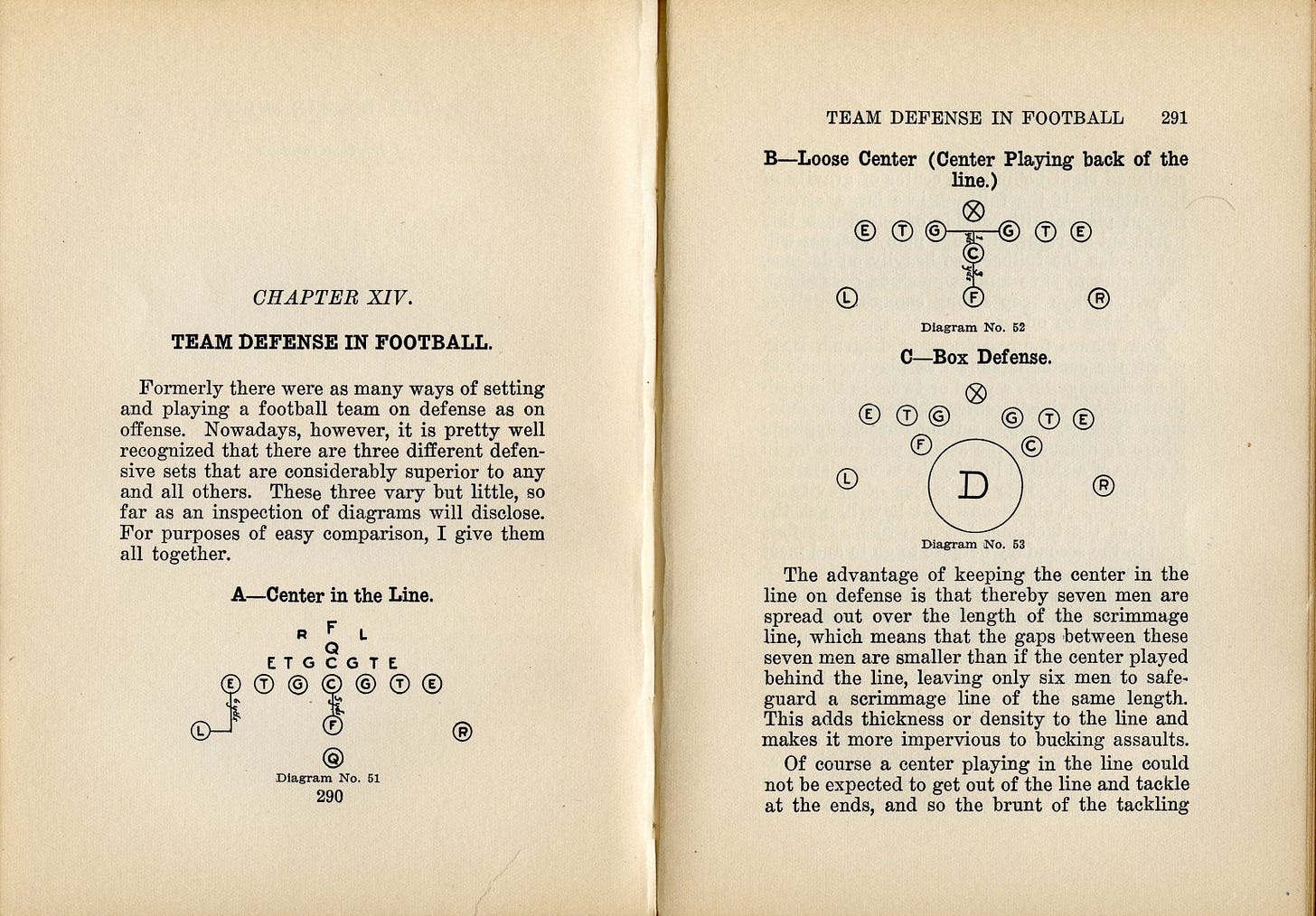Terminology... Numbering Defenses
This is article #21 in a series covering the origins of football’s terminology. All are available under the Terminology tab above. My book, Hut! Hut! Hike! describes the emergence of more than 400 football terms.
Defensive football has grown far more technical and strategic over the years. Before the 1950s, most football books written by coaches had numerous chapters covering the offense and one or two addressing the defense. Coaching defense primarily consisted of tackling drills and other individual techniques, while defensive strategy consisted of little more than changing the defensive alignment.
John Heisman, for example, describes only three defenses in his 1924 Principles of Defense, with the only difference between two of his defenses being whether the center lines up on the line of scrimmage or backs up a few steps into a "roving center" position, the forerunner of the middle linebacker.
Likewise, Charles Daly's American Football (1921) describes the close defense, kick defense, forward-pass defense, and goal line defense. Zuppke's Football, Techniques and Tactics (1924) distinguishes the Diamond and Block defenses. He also points out the difference between players at primary, secondary, tertiary, and quarternary levels.
The interesting point about Zuppke differentiating these levels is that identifying defenses based on the number of players at each level appears for the first time later that year when newspapers noted that both Army and Navy ran 7-2-2 defenses.
Describing defenses by the number of players at each level became the norm, as defensive variations increased when offenses began splitting ends, putting backs in motion, and generally tossing the ball around the field, leading Dana X. Bible to write the following in his Championship Football (1947):
The best defensive arrangements that have been found most effective are: 6-2-2-1, 5-3-2-1, 7-1-2-1, 7-2-2, 6-3-2, 5-4-2. (And on the goal line, such line emphasizing formations as 7-4 and 8-3.)
The three- and four-level designations remained common into the 1950s and then faded, so defenses came to be described only by the first two levels, such as 6-3, 5-4, 5-3, and the Oklahoma 52 (with or without the dash).
As the game continued evolving, the numerical designations remained, though the first number got smaller as time passed: 4-3, 3-4, and now 2-5. Where will it all end?
Postscript (2/18/23)
Shortly after publishing this post, I acquired a composite college schedule promotional brochure with a page illustrating fifteen offensive formations and corresponding numbered defenses. Enjoy.
Football Archaeology is reader-supported. Click here to buy one of my books or otherwise support the site.




